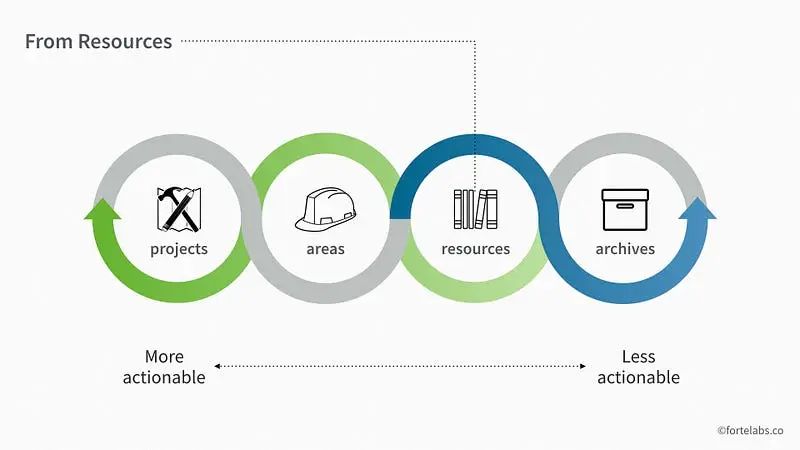3 Resources
Resources
A resource is a topic or theme of ongoing interest.
Examples include: habit formation; project management; transhumanism; coffee; music; gardening; online marketing; SEO; interior design; architecture; note-taking
Flows from Resources

To Projects: Often, what was previously just an interest catches fire and becomes a full-blown project. This is one of the primary use cases for resource notebooks actually. A participant in BASB had been tracking the rise of Blockchain technology for years, collecting little bits of news, research, and analysis he found useful. During the course he realized he could turn this interest into an online course explaining the basics of Blockchain to a novice audience. Instead of starting this new project from scratch, he already had an accumulated body of knowledge to build upon.
To Areas: This flow would occur if you realized a piece of information in a resource notebook could apply to an area of responsibility in your life. Maybe you have a Recipes (resource) notebook, and realize that one of the recipes in it could come in handy for a new standard you’ve committed to, such as cooking healthier meals for your family (an area).
To Archives: It’s natural to expect some interests to go dormant over time. You don’t want to delete the information associated with it, because you never know when it could become active again. But in the meantime, it can be useful to archive resource notebooks to avoid cluttering your workspace. My own examples include notebooks for “time-tracking,” “sponsorships/partnerships,” and “HTML.”